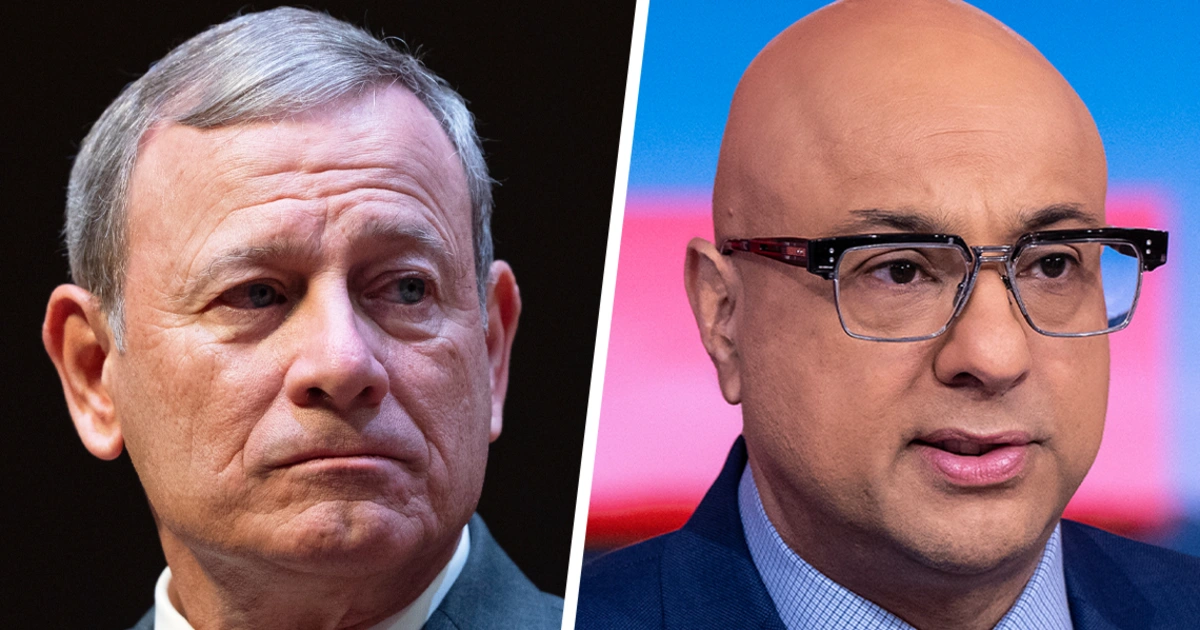Copyright MSNBC

This is an adapted excerpt from the Oct. 19 episode of “Velshi.” One of the crown jewels of the Civil Rights Movement is the Voting Rights Act, which was signed into law by President Lyndon B. Johnson in 1965. At the time, Johnson called it a “triumph for freedom as huge as any victory won on any battlefield.” It was a step toward making good on the promises outlined by the 14th and 15th amendments about equal protection under the law. It was a key part of ending the Jim Crow–era policies of the day, which kept Black people out of Southern politics and aimed to ensure states could not disenfranchise them. In recent years, the Supreme Court’s conservative majority has chipped away at crucial sections of the civil rights law. For many years, it was reshaped and expanded to protect a broader swath of Americans: Spanish speakers, Native Americans, disabled people and minority voters all over the country. And, as it turns out, it was very successful. Over the years, it has helped improve representation in government. The number of nonwhite representatives in the House increased dramatically. Today, according to Pew Research, 28% of House members are Black, Hispanic, Asian or Native American. For decades, the Voting Rights Act had bipartisan support. Republican President George W. Bush reauthorized it in 2006. It was thriving, a win for both parties — until it wasn’t. In recent years, the Supreme Court’s conservative majority has chipped away at crucial sections of the civil rights law. In 2013, the court struck down Section 4 as unconstitutional, in a 5-4 ruling that led to the weakening of Section 5 as well. It was a major blow to the legislation. Section 5 established a process known as preclearance, which was a formula for the Justice Department or the D.C. federal court to pre-approve any changes to voting laws proposed by states with histories of discriminatory policies. For decades, it blocked racially discriminatory election rules like gerrymandering and voter ID restrictions. When Section 5 was struck down down, nine states, mostly in the South, were then free to change their election laws without advance federal approval. In a scathing dissent, Justice Ruth Bader Ginsburg wrote, “Throwing out preclearance when it has worked and is continuing to work to stop discriminatory changes is like throwing away your umbrella in a rainstorm because you are not getting wet.” There’s now essentially one remaining pillar of the Voting Rights Act: Section 2. It outlaws election practices that deny or limit voting rights based on race, such as racial gerrymandering and restrictions on ballot access and voter registration. For decades, state and federal courts have had to ensure that legislative maps contain some districts where minority voters make up at least half the population. The rationale is to prevent the dilution of minorities’ voting power and to ensure fair representation for communities of Black, Latino or Asian voters. But that practice is now being challenged at the nation’s highest court. Last week, the Supreme Court heard oral arguments in the case of Louisiana v. Callais. The case involves a group of white voters in Louisiana who are challenging a congressional map that creates two majority-Black districts out of six total districts in the state. This map was created in line with the Voting Rights Act not to disempower Black voters, who make up a third of the state’s population. But now the group of white voters has argued that the map is racist against them. After oral arguments last week, several of the conservative justices signaled their willingness to strike down Section 2. This would essentially legalize gerrymandering by race and allow Republicans to pick up an estimated 19 congressional seats in the process. For conservatives, dismantling the Voting Rights Act has been a long game, and its opponents have long found a champion in the chief justice of the court, John Roberts. As a young attorney in Ronald Reagan’s Justice Department back in the 1980s, Roberts fought against expanding the civil rights law. When he was nominated to the Supreme Court by Bush, then-Rep. John Lewis, who nearly died marching for voting rights in Selma, Alabama, testified against his nomination, telling the Senate Judiciary Committee, “Had Judge Roberts’ narrow reading of the Voting Rights Act prevailed, fewer people of color would be serving in Congress and at both the state and local level today.” So it comes as no surprise to those who’ve been following his career that, as chief justice, Roberts has presided over the historic dismantling, piece by piece, of the Voting Rights Act — a project that will likely be nearly fully realized when the court rules on this latest case.



